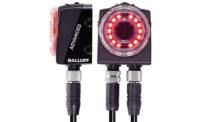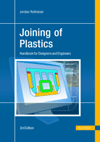Vision systems play a vital role in automated assembly systems. They can check for the presence or absence of parts or materials. They can measure key dimensions of assemblies. They can tell robots the precise location of parts. They can even read 1D and 2D codes. Here’s a look at some of the latest developments.
Vision Software for Beginners

MVTec Software has launched a new version of its easy-to-use machine vision software MERLIC. The software is especially suited for beginners who are looking for software that can be used to create complete machine vision applications. In version 5.4, the new feature set focuses mostly on easier process integration. Thanks to newly developed plug-ins, MERLIC can now be operated via the popular REST interface as well as controlled by a Schneider Electric Modicon PLC. The REST interface opens the door to the world of web services. Engineers can control the software through this interface using a Frontend on the web browser. The results of the vision application can also be displayed in a device-independent manner, for example on mobile devices.
Another new plugin allows engineers to access the Schneider Electric Modicon PLC. This broadens the range of applications that can be integrated with MERLIC. For instance, this integration would enable robots and MERLIC to collaborate directly using a Modicon PLC that operates on the Modbus protocol.
The “acquisition sequences” feature introduces new possibilities for image acquisition. For instance, when dealing with a poorly lit object, engineers can now acquire images with both short and long exposure times, which are then merged into a single image. As a result, challenging object characteristics are balanced, resulting in improved visibility of details. Non-streaming devices, such as lighting, can also be utilized within MERLIC using this method.
Working with images in the MERLIC RTE setup has also been improved. It is now possible to save acquired images directly to a file. This facilitates the process of generating image data sets for training deep learning models.
MVTec Software GmbH
www.mvtec.com
Camera Boasts 20 Megapixel Sensor
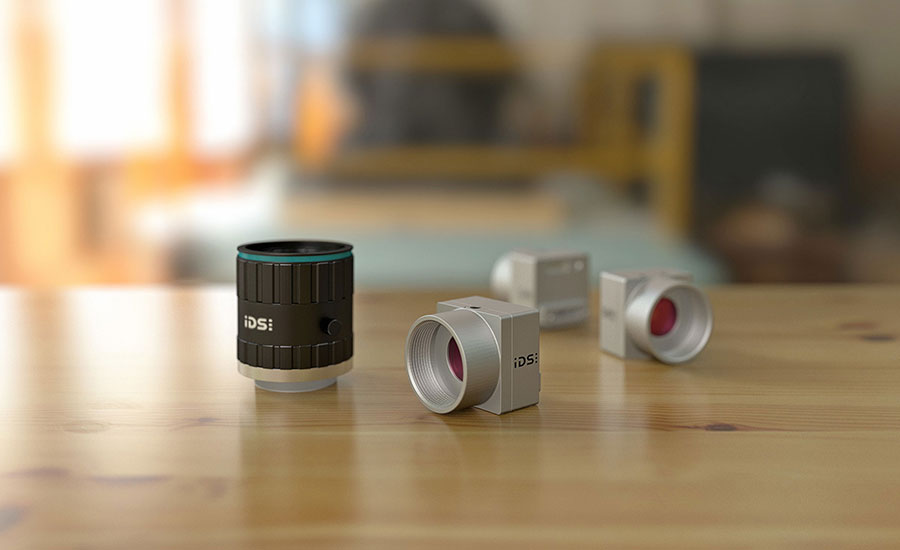
The 20-megapixel, rolling-shutter Onsemi AR2020 vision sensor provides 5K UHD resolution that makes even the smallest details reliably visible. This benefits applications, such as surface inspection, quality control and laboratory analyses. The sensor is now available in combination with the compact uEye+ XCP cameras. The product line is characterized by its compact design with a closed housing and a USB3 interface.
IDS offers the Onsemi AR2020 in color and as a monochrome variant. The latter is suitable for low-light applications and microscopy, which often require the highest possible sensitivity. Compared to the Onsemi AR1820, the new sensor has a larger diagonal and therefore a higher resolution (5,136 by 3,856 pixels). With a frame rate of 15 frames per second (fps), many demanding applications can be realized. In FHD mode with 1,920 by 1,080 pixels, live videos with 27 fps are possible. Due to the larger pixels (1.4 microns), engineers also have more leeway when choosing the appropriate lens.
IDS Imaging Development Systems GmbH
www.ids-imaging.us
Self-Contained Vision System
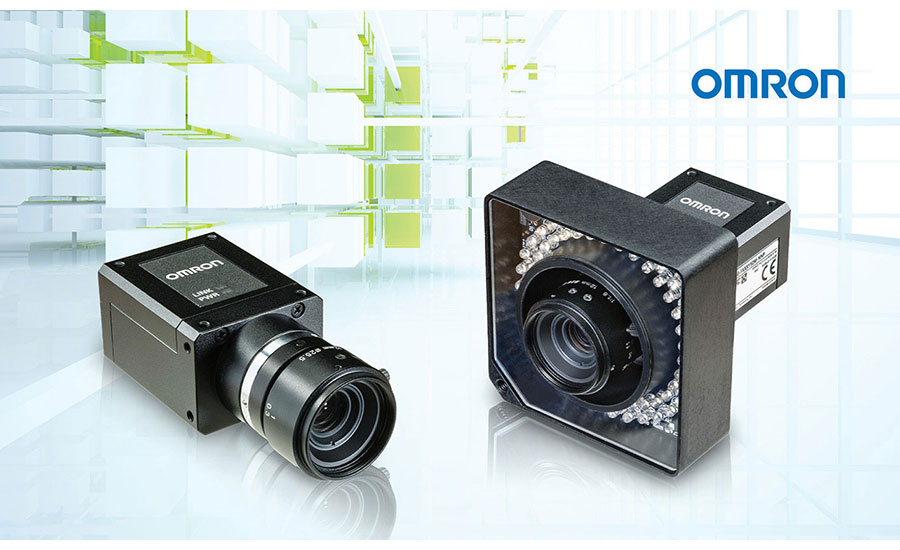
The F440 Smart Camera allows engineers to embed a fully self-contained vision system within machines, providing ease of use and improving performance. The camera serves a wide range of applications, including cap inspection, fill level inspection, box count, bar code scanning, optical character recognition, and measurement. To ensure maximum customization, it offers a variety of accessory options, allowing engineers to select their preferred lensing, lighting and cabling. The camera has an industry-standard C lens mount, so engineers can fine-tune the optics and lighting to meet their specific requirements. It comes equipped with AutoVISION software, which offers three levels of capability tailored to different applications. The heart of the camera is a 5 megapixel Sony Pregius IMX264 global shutter CMOS sensor.
Omron Automation
https://automation.omron.com
New Cameras Overcome Limitations of CSI-2
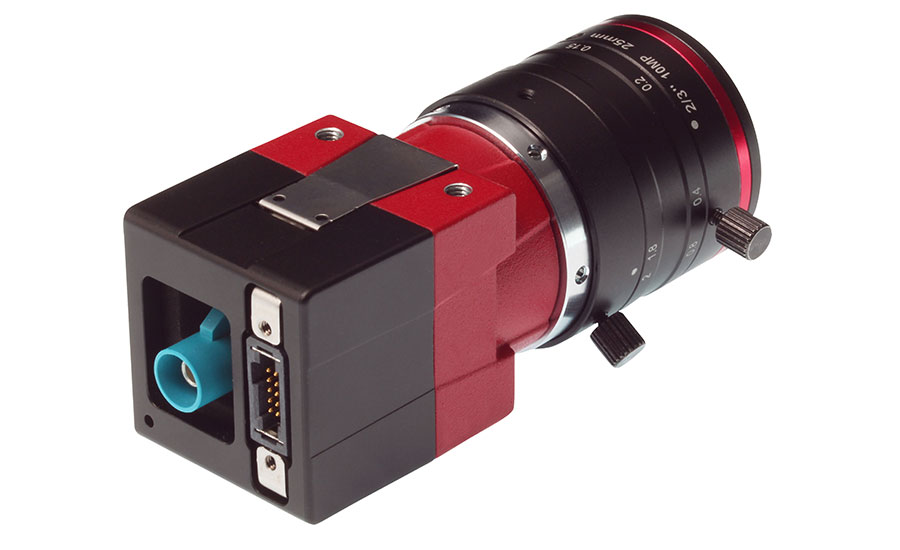
Allied Vision has released two new cameras in its Alvium series, one featuring an FPD-Link III (Flat Panel Display Link) interface and the other the GMSL2 (Gigabit Multimedia Serial Link) interface. The new cameras exceed the limited cable length of CSI-2 cameras. Alvium FP3 and Alvium GM2 cameras enable long cable lengths and have robust housings and connectors. With a large selection of over 30 CMOS global and rolling shutter sensors, Allied Vision offers a variety of FPD-Link III and GMSL2 cameras enabling long-range data transmission based on the CSI-2 standard.
Many applications in robotics, logistics and medical applications can be solved by embedded vision systems using CSI-2 cameras. Those systems benefit from small weight and size, low power consumption, and minimal latency data transmission. However, there are many limitations such as restricted cable length, open housings and intricate connectors. Alternative camera interfaces often cannot compete with the benefits of CSI-2 or come with much higher system costs.
Alvium FP3 cameras with FPD-Link III interface and Alvium GM2 cameras with GMSL2 interface have been designed to overcome the limitations of standard CSI-2 cameras. The CSI-2-based closed-housing cameras come with an integrated serializer and a rugged FAKRA connector for thin coaxial cables.
Engineers have 30 sensors to choose from—SWIR, NIR and UV models are available. Systems setups with coaxial cables up to 15 meters are possible. Power over coax supports single-cable setups. Two GPIOs are available for use either via the coax cable or a separate I/O connector. The cameras have been tested and support NVIDIA Jetson platforms based on JetPack 4.6.2 for Jetson AGX Xavier and Jetson Xavier NX. JetPack 5.1.1 for Jetson AGX Orin and Orin NX are also supported. An open-source driver is available on Github.
Allied Vision Technologies GmbH
www.alliedvision.com
Sensor Provides Optical Sensing and Intuitive Indication in One Device
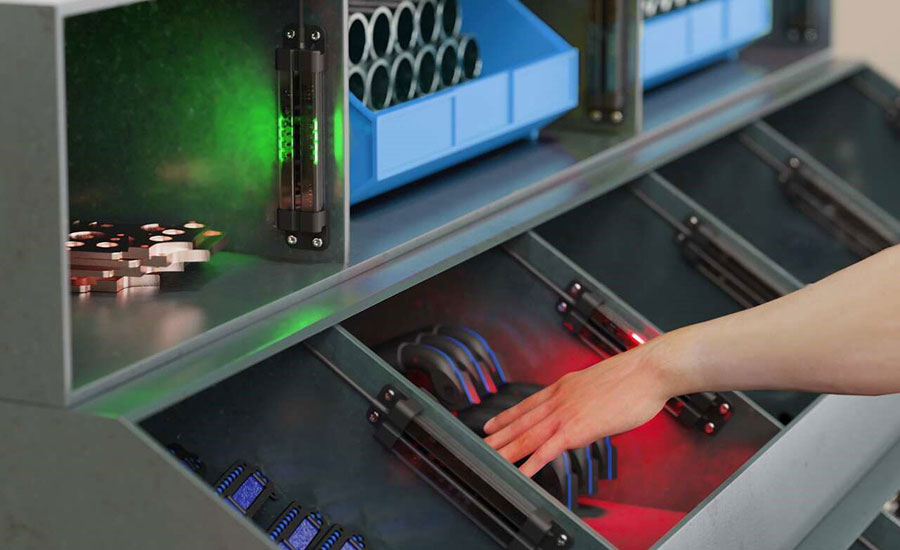
The PVS28 parts verification sensor is designed for visual operator guidance with touchless activation in picking, assembly and fulfillment applications.
The sensor provides maximum flexibility with two easy-to-use adjustable sensing ranges. Diffuse mode has an adjustable range of 20 to 500 millimeters. For a longer range, retroreflective mode enables the sensor to sense up to 1,000 millimeters with a reflector. The sensor includes a quick-disconnect, 150-millimeter, five-pin M12 connector for simple installation. The sensor comes with three teachable modes—object mode, background mode and window mode—for fast programming through remote pulses. The teach process is simplified by visual feedback, including mode confirmation and signal strength.
The sensor comes standard with green, yellow, and red indicator colors. This is ideal for picking and assembly applications. A green light informs the operator which bin to pick from, a yellow light gives automatic acknowledgement of the pick when a hand or object is detected, and a red light indicates the wrong bin was picked from. Additionally, the sensor has touchless activation, eliminating possible contamination and the need for physical force to operate while increasing the speed and accuracy of the pick.
With more colors, come more ways to communicate status. The sensor has a discrete input and output and is programmable through Banner’s free Pro Editor software. Engineers can change indicator colors and animations, plus output logic including delays. Pro Editor makes it easy to add custom colors and animations for enhanced status indication and intuitive operator guidance. Seven colors are available for unique identification of operators and statuses. Users can also select from eight animations, such as intensity sweep, 50/50 flash and chase.
Banner Engineering Corp.
www.bannerengineering.com
ASSEMBLY ONLINE
For more information on vision systems, read these articles:
Vision System Inspects Bearing Assemblies
Vision System Inspects Valve Assembly
Understanding Line-Scan Cameras




